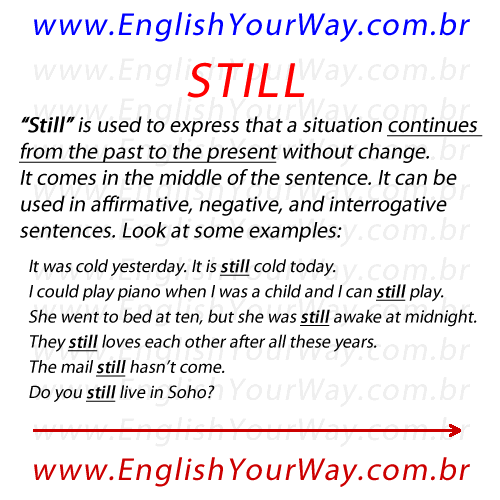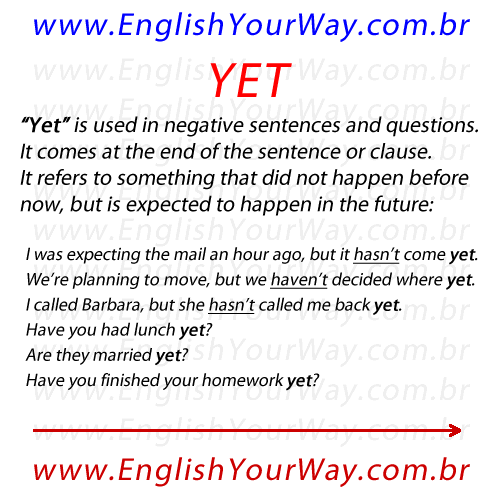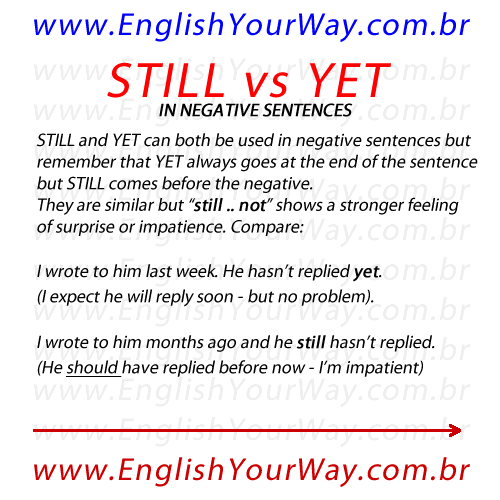“Still,” “yet,” and “already” are commonly used adverbs in English that can sometimes be confusing. They help indicate time and the progression of events, but each has its own specific use and nuance. This guide will explain the differences between these three words, complete with definitions and examples to clarify their correct usage.


STILL
Definition: “Still” is used to indicate that an action or situation that began in the past continues to the present and may continue into the future. It suggests that something has not changed.
Examples:
- Affirmative Sentences:
- “She is still working on her project.”
- “They are still living in the same house.”
- Negative Sentences:
- “He hasn’t still finished his homework.” (Less common, but can be used for emphasis)
Usage Tips:
- “Still” is often placed before the main verb but after auxiliary verbs like “be,” “have,” or “will.”
- It emphasizes the continuity or persistence of an action or situation.

YET
Definition: “Yet” is used to indicate that an action or situation is expected to happen but has not happened up to the present moment. It is commonly used in questions and negative sentences.
Examples:
- Questions:
- “Have you finished your assignment yet?”
- “Is the report ready yet?”
- Negative Sentences:
- “I haven’t seen that movie yet.”
- “They haven’t arrived yet.”
Usage Tips:
- “Yet” is typically placed at the end of the sentence.
- It conveys a sense of anticipation or expectation for something that has not occurred.

STILL and YET can both be used in negative sentences to express that something hasn’t happened before now, They are similar but STILL shows a higher level of impatience. Also remember that YET goes at the end of the sentence.

ALREADY
Definition: “Already” is used to indicate that an action or situation has occurred earlier than expected or earlier than another event. It shows that something has happened before now.
Examples:
- Affirmative Sentences:
- “She has already finished her homework.”
- “They have already left for the airport.”
- Questions:
- “Have you already eaten lunch?”
- “Did they already know about the meeting?”
Usage Tips:
- “Already” is usually placed before the main verb or between the auxiliary and main verb.
- It emphasizes that an action has been completed sooner than expected.
ALREADY is used to express that something happened sooner than expected.
Key Differences:
- Still: Indicates continuation from the past into the present (e.g., “She is still here.”).
- Yet: Indicates that something expected has not happened up to now (e.g., “He hasn’t called yet.”).
- Already: Indicates that something happened sooner than expected (e.g., “They have already arrived.”).
Conclusion: Understanding the differences between “still,” “yet,” and “already” is crucial for expressing time and progression accurately in English. By paying attention to the context and the placement of these words in sentences, you can effectively convey whether an action is ongoing, anticipated, or completed.
